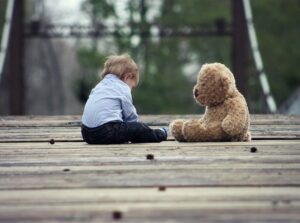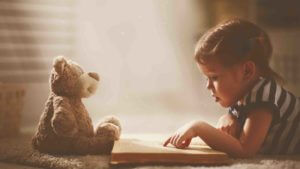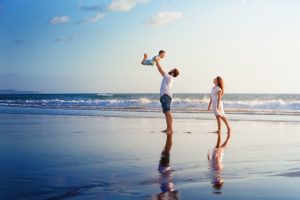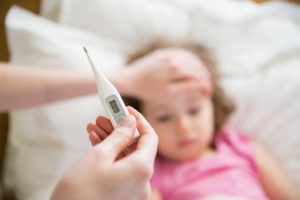While your child is happily splashing around in the water, you are particularly attentive and want to make sure that nothing happens to him. However, the danger is not only when your child is in the water. Secondary drowning is possible even days after bathing in the water. Learn how to recognize it early here.
Table of contents
Secondary Drowning: What Is It?
Water is great fun for children. However, there are also many dangers lurking here that can even be life-threatening in an emergency. Not only regular drowning can end badly in an emergency, but also so-called secondary drowning.
If your child can always romp in the water, it happens quickly that he swallows a little water. Normally this is not bad. Just cough, spit it out – on it goes. It only becomes dramatic when the water is inhaled.
Once the water gets into the lungs, it can still lead to bad consequences hours or even days later. In the worst case, the inhaled water prevents breathing and also damages the tissue in the lungs.
Your child’s body is in a state of emergency: there is a lack of oxygen. In this case, your child would suffocate, even if it has not been in the water for a long time. Experts then speak of secondary drowning.
Also interesting:- The 10 best frame pools for children
- The 10 best swimming hoops for children
- The 10 best camping equipment for family vacation
How To Recognize Secondary Drowning?
First things first: the following symptoms can also appear after a few hours. At a time when you least expect it.
The Symptoms
Typical symptoms of secondary drowning are breathing problems. If your child is suffering from shallow, gasping breathing, this could be a sign that there is water in the lungs.
Coughing or vomiting should also be recognized as alarm signals. Children also often appear tired or listless. Lips may turn blue, skin may become pale, and chest pain may occur.
Caution: If you have observed even one of these symptoms, you should not lose any time. In the worst case, the situation can become life-threatening. Nevertheless, you should try to stay calm. It is easier said than done, but very helpful for your child.
Although these symptoms can also indicate mild dehydration, too much sun or a problem with the circulation, there is no danger to life here. So be on the lookout for the nearest emergency room and have a doctor check the symptoms. Secondary drowning poses a serious threat to your child’s life.
How Can I Prevent Secondary Drowning?
Did you know that as little as 2 milliliters per kilogram of body weight is considered life-threatening? Although at first you may think that a little water in the lungs is not so bad, in that case it can lead to fatal complications.
The statement also means that children are at increased risk for secondary drowning due to their low body weight. In little ones, even a small amount of water in the lungs can leave fatal damage.
In addition to the risk of secondary drowning, there is also the risk of so-called dry drowning. If children get their heads under water, they can go into a kind of shock paralysis. The body is simply blocked at this moment.
This false protective mechanism can lead to disaster. The vocal cords – or more precisely, the glottis – become tense. Normal breathing is now impossible. Your child would drown in this case – even if there is not a drop of water in the lungs.
Dry Drowning
The bad thing about dry drowning is that even the smallest amount of water can cause enormous damage. So even a puddle or the shallow area of the children’s pool in the swimming pool can become a real danger.
The younger your child is, the more you should keep an eye on him or her while swimming. Neither high waves nor currents are particularly dangerous for your child. It is mostly shallow waters that can become a deadly trap. Why? Because this is where most people’s attention drops.
Shallow, calm water is considered dangerous by very few people. They sit back, relax and let their child splash happily in the water. Too little attention in this case can have drastic consequences.
This Is The Best Way To Protect Your Child
The earlier your child starts learning to swim, the better. Your child needs to learn how to behave in the water and build a healthy relationship with water. If your child is afraid of water, it can happen in the worst case that the body cramps.
Important: Even if your child is already a master in swimming, it can not hurt to throw an additional eye on him. Attention is the key here.
Secondary Drowning: Conclusion
As you have learned in this article, not only a “normal” drowning has to be a life-threatening situation for your child.
Secondary drowning refers to the phenomenon of drowning even when you are no longer in the water at all. Even a tiny amount of water is enough to cause fatal complications, especially in children.
Get your child used to safe water handling in time. It is recommended to start swimming at the age of 4. This way, your child will know how to behave in the water from an early age. Your child should under no circumstances develop a fear of water but also not tend to overestimate himself.
In a serious situation, your child’s body may become tense and completely blocked. In addition, you should always keep an eye on your child. Even if he is already confident in swimming, it can not hurt.
This way you can avoid dangerous situations and really enjoy the fun of swimming.








